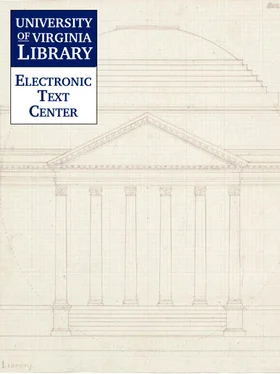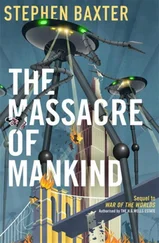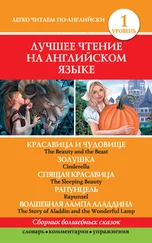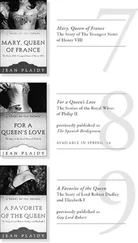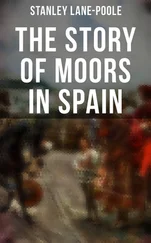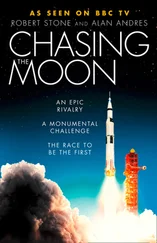Hendrik Loon - The Story of Mankind
Здесь есть возможность читать онлайн «Hendrik Loon - The Story of Mankind» весь текст электронной книги совершенно бесплатно (целиком полную версию без сокращений). В некоторых случаях можно слушать аудио, скачать через торрент в формате fb2 и присутствует краткое содержание. Год выпуска: 2000, Издательство: Electronic Text Center. University of Virginia Library., Жанр: Старинная литература, на английском языке. Описание произведения, (предисловие) а так же отзывы посетителей доступны на портале библиотеки ЛибКат.
- Название:The Story of Mankind
- Автор:
- Издательство:Electronic Text Center. University of Virginia Library.
- Жанр:
- Год:2000
- ISBN:нет данных
- Рейтинг книги:3 / 5. Голосов: 1
-
Избранное:Добавить в избранное
- Отзывы:
-
Ваша оценка:
- 60
- 1
- 2
- 3
- 4
- 5
The Story of Mankind: краткое содержание, описание и аннотация
Предлагаем к чтению аннотацию, описание, краткое содержание или предисловие (зависит от того, что написал сам автор книги «The Story of Mankind»). Если вы не нашли необходимую информацию о книге — напишите в комментариях, мы постараемся отыскать её.
The Story of Mankind — читать онлайн бесплатно полную книгу (весь текст) целиком
Ниже представлен текст книги, разбитый по страницам. Система сохранения места последней прочитанной страницы, позволяет с удобством читать онлайн бесплатно книгу «The Story of Mankind», без необходимости каждый раз заново искать на чём Вы остановились. Поставьте закладку, и сможете в любой момент перейти на страницу, на которой закончили чтение.
Интервал:
Закладка:
At last, during the first half of the fifteenth century, the problem was solved in the southern Netherlands by Jan and Hubert van Eyck. The famous Flemish brothers mixed their paint with specially prepared oils and this allowed them to use wood and canvas or stone or anything else as a background for their pictures.
But by this time the religious ardour of the early Middle Ages was a thing of the past. The rich burghers of the cities were succeeding the bishops as patrons of the arts. And as art invariably follows the full dinner-pail, the artists now began to work for these worldly employers and painted pictures for kings, for grand-dukes and for rich bankers. Within a very short time, the new method of painting with oil spread through Europe and in every country there developed a school of special painting which showed the characteristic tastes of the people for whom these portraits and landscapes were made.
In Spain, for example, Velasquez painted court-dwarfs and the weavers of the royal tapestry-factories, and all sorts of persons and subjects connected with the king and his court. But in Holland, Rembrandt and Frans Hals and Vermeer painted the barnyard of the merchant's house, and they painted his rather dowdy wife and his healthy but bumptious children and the ships which had brought him his wealth. In Italy on the other hand, where the Pope remained the largest patron of the arts, Michelangelo and Correggio continued to paint Madonnas and Saints, while in England, where the aristocracy was very rich and powerful and in France where the kings had become uppermost in the state, the artists painted distinguished gentlemen who were members of the government, and very lovely ladies who were friends of His Majesty.
The great change in painting, which came about with the neglect of the old church and the rise of a new class in society, was reflected in all other forms of art. The invention of printing had made it possible for authors to win fame and reputation by writing books for the multitudes. In this way arose the profession of the novelist and the illustrator. But the people who had money enough to buy the new books were not the sort who liked to sit at home of nights, looking at the ceiling or just sitting. They wanted to be amused. The few minstrels of the Middle Ages were not sufficient to cover the demand for entertainment. For the first time since the early Greek city-states of two thousand years before, the professional playwright had a chance to ply his trade. The Middle Ages had known the theatre merely as part of certain church celebrations. The tragedies of the thirteenth and fourteenth centuries had told the story of the suffering of our Lord. But during the sixteenth century the worldly theatre made its reappearance. It is true that, at first, the position of the professional playwright and actor was not a very high one. William Shakespeare was regarded as a sort of circus-fellow who amused his neighbours with his tragedies and comedies. But when he died in the year 1616 he had begun to enjoy the respect of his neighbours and actors were no longer subjects of police supervision.
William's contemporary, Lope de Vega, the incredible Spaniard who wrote no less than 1800 worldly and 400 religious plays, was a person of rank who received the papal approval upon his work. A century later, Molière, the Frenchman, was deemed worthy of the companionship of none less than King Louis XIV.
Since then, the theatre has enjoyed an ever increasing affection on the part of the people. To-day a ``theatre'' is part of every well-regulated city, and the ``silent drama'' of the movies has penetrated to the tiniest of our prairie hamlets.
Another art, however, was to become the most popular of all. That was music. Most of the old art-forms demanded a great deal of technical skill. It takes years and years of practice before our clumsy hand is able to follow the commands of the brain and reproduce our vision upon canvas or in marble. It takes a life-time to learn how to act or how to write a good novel. And it takes a great deal of training on the part of the public to appreciate the best in painting and writing and sculpture. But almost any one, not entirely tone-deaf, can follow a tune and almost everybody can get enjoyment out of some sort of music. The Middle Ages had heard a little music but it had been entirely the music of the church. The holy chants were subject to very severe laws of rhythm and harmony and soon these became monotonous. Besides, they could not well be sung in the street or in the market-place.
The Renaissance changed this. Music once more came into its own as the best friend of man, both in his happiness and in his sorrows.
The Egyptians and the Babylonians and the ancient Jews had all been great lovers of music. They had even combined different instruments into regular orchestras. But the Greeks had frowned upon this barbaric foreign noise. They liked to hear a man recite the stately poetry of Homer and Pindar. They allowed him to accompany himself upon the lyre (the poorest of all stringed instruments). That was as far as any one could go without incurring the risk of popular disapproval. The Romans on the other hand had loved orchestral music at their dinners and parties and they had invented most of the instruments which (in very modified form) we use to-day. The early church had despised this music which smacked too much of the wicked pagan world which had just been destroyed. A few songs rendered by the entire congregation were all the bishops of the third and fourth centuries would tolerate. As the congregation was apt to sing dreadfully out of key without the guidance of an instrument, the church had afterwards allowed the use of an organ, an invention of the second century of our era which consisted of a combination of the old pipes of Pan and a pair of bellows.
Then came the great migrations. The last of the Roman musicians were either killed or became tramp-fiddlers going from city to city and playing in the street, and begging for pennies like the harpist on a modern ferry-boat.
But the revival of a more worldly civilisation in the cities of the late Middle Ages had created a new demand for musicians. Instruments like the horn, which had been used only as signal-instruments for hunting and fighting, were remodelled until they could reproduce sounds which were agreeable in the dance-hall and in the banqueting room. A bow strung with horse-hair was used to play the old-fashioned guitar and before the end of the Middle Ages this six-stringed instrument (the most ancient of all string-instruments which dates back to Egypt and Assyria) had grown into our modern four- stringed fiddle which Stradivarius and the other Italian violin-makers of the eighteenth century brought to the height of perfection.
And finally the modern piano was invented, the most wide-spread of all musical instruments, which has followed man into the wilderness of the jungle and the ice-fields of Greenland. The organ had been the first of all keyed instruments but the performer always depended upon the co-operation of some one who worked the bellows, a job which nowadays is done by electricity. The musicians therefore looked for a handier and less circumstantial instrument to assist them in training the pupils of the many church choirs. During the great eleventh century, Guido, a Benedictine monk of the town of Arezzo (the birthplace of the poet Petrarch) gave us our modern system of musical annotation. Some time during that century, when there was a great deal of popular interest in music, the first instrument with both keys and strings was built. It must have sounded as tinkly as one of those tiny children's pianos which you can buy at every toy-shop. In the city of Vienna, the town where the strolling musicians of the Middle Ages (who had been classed with jugglers and card sharps) had formed the first separate Guild of Musicians in the year 1288, the little monochord was developed into something which we can recognise as the direct ancestor of our modern Steinway. From Austria the ``clavichord'' as it was usually called in those days (because it had ``craves'' or keys) went to Italy. There it was perfected into the ``spinet'' which was so called after the inventor, Giovanni Spinetti of Venice. At last during the eighteenth century, some time between 1709 and 1720, Bartolomeo Cristofori made a ``clavier'' which allowed the performer to play both loudly and softly or as it was said in Italian, ``piano'' and ``forte.'' This instrument with certain changes became our ``pianoforte'' or piano.
Читать дальшеИнтервал:
Закладка:
Похожие книги на «The Story of Mankind»
Представляем Вашему вниманию похожие книги на «The Story of Mankind» списком для выбора. Мы отобрали схожую по названию и смыслу литературу в надежде предоставить читателям больше вариантов отыскать новые, интересные, ещё непрочитанные произведения.
Обсуждение, отзывы о книге «The Story of Mankind» и просто собственные мнения читателей. Оставьте ваши комментарии, напишите, что Вы думаете о произведении, его смысле или главных героях. Укажите что конкретно понравилось, а что нет, и почему Вы так считаете.
